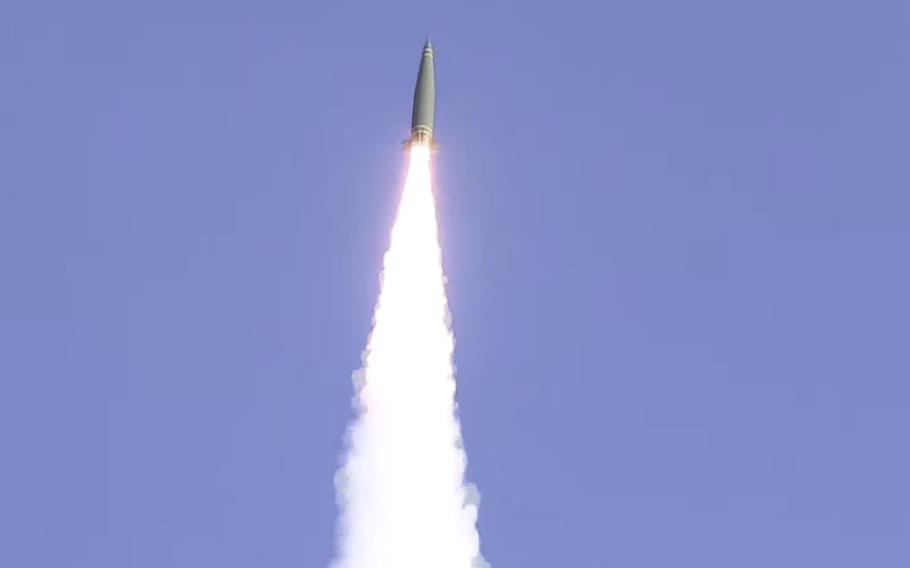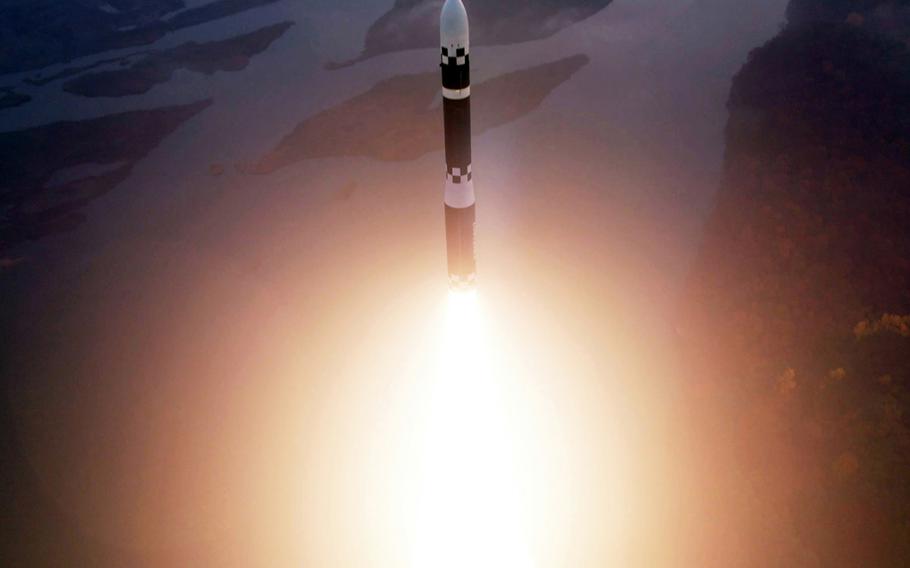
South Korea launches a Hyunmoo-2 missile from an undisclosed location on its eastern coast, July 5, 2017. (South Korea’s Ministry of National Defense)
OSAN AIR BASE, South Korea — South Korea plans to test-fire a domestically made, short-range ballistic missile in response to the North recently launching an intercontinental ballistic missile, according to a South Korean news report.
The Missile Strategy Command may test its Hyunmoo-2 ballistic missile this week in reply to North Korea “escalating its provocations” on Oct. 31 by launching an ICBM, an unnamed military official said in a Yonhap News report published Wednesday.
The South Korean missile is “capable of striking North Korea in a contingency” and serves as a “warning to the North,” the official reportedly said.
North Korea’s ICBM flew 620 miles eastward from the Pyongyang area at a maximum altitude of 4,350 miles, according to Japanese Defense Minister Gen Nakatani. It was the first launch of its kind since Dec. 18.
The North’s state-run Korean Central News Agency reported the launch broke the flight records of previous missiles and hailed the ICBM, called the Hwasongpho-19, as a “milestone” achievement.
The communist regime also fired at least seven short-range ballistic missiles Tuesday, according to South Korea’s Joint Chiefs of Staff and Japan’s Ministry of Defense. They flew roughly 250 miles before coming down in waters between the Korean Peninsula and Japan, the Joint Chiefs said.

North Korea launches a Hwasongpho-19 intercontinental ballistic missile, Oct. 31, 2024, in this image from the state-run Rodong Sinmun newspaper. (Rodong Sinmun)
North Korea has fired approximately 45 ballistic missiles in 12 separate days of testing so far this year.
South Korean President Yoon Suk Yeol’s administration has often responded to the North’s missile launches with shows of military force, sometimes in concert with the U.S. and Japan.
A day after the latest ICBM launch, fighter jets from all three countries escorted a U.S. Air Force B-1B Lancer bomber on a demonstration between the air identification zones of Japan and South Korea.
Seoul test-fired its Hyunmoo-2 missile on Oct. 5, 2022, a day after the North launched an intermediate-range ballistic missile that flew over Japan and splashed down in the Pacific Ocean. North Korea’s missile traveled nearly 2,800 miles at a peak altitude of 602 miles; it was the first time in five years that a North Korean missile flew over Japan.
The South’s response failed. The missile crashed inside a South Korean military base due to a faulty gyroscope, the Ministry of National Defense said at the time. The warhead did not explode, and no injuries were reported by the military.